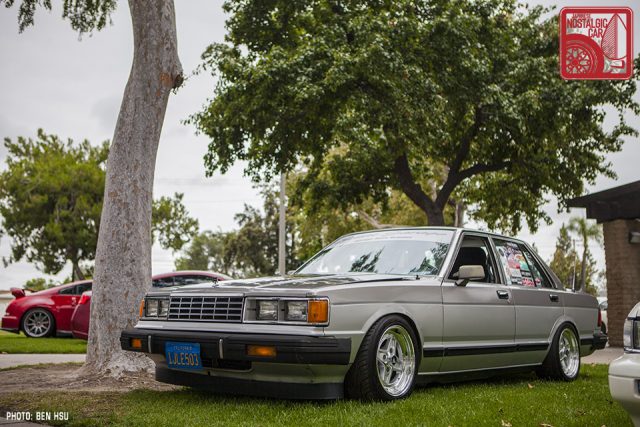
With the prices of the most popular models entering unattainable status for a lot of younger JNCers, we felt it necessary to highlight some painfully overlooked — often for no good reason at all — yet still affordable (for now) nostalgics. Welcome to another Consider the Following installment, in which we consider the G910 Nissan Maxima.
Nissan markets the modern front-wheel-drive CVT-laden Maxima as a 4DSC (4-Door Sports Car) and while it is a very nice sedan that has a relatively sporty feel, it’s just not a sports car. However, there was a time when it was, in fact, a 4-door variant of a sports car. For its first generation, the Maxima was a front engine, rear wheel drive sedan with all the underpinnings of a 280ZX. It was basically Nissan’s Z-car competitor to the Toyota Cressida, which shares a platform with the revered Supra. The question is, why aren’t these as popular as the Cressy? Consider the following: the G910 1980-1984 Nissan Maxima/Datsun Maxima/Datsun 810.
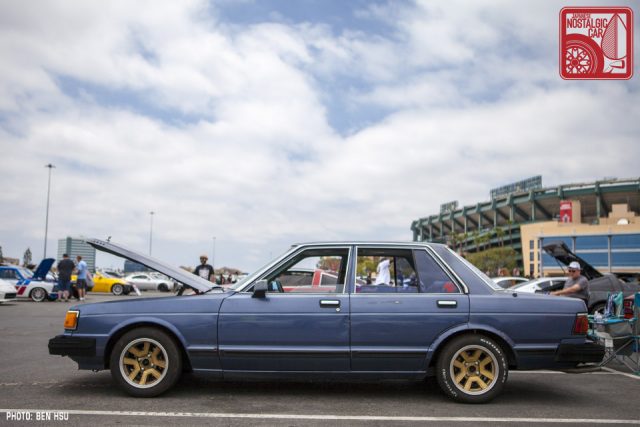
Yes, that is a very confusing nameplate. Unfortunately, this generation came into existence during exactly the period of brand changeover from Datsun to Nissan in the United States, and ended up with three names. In 1980-1981 the 810 used Datsun’s three digit naming nomenclature with the trim levels of Deluxe and Maxima.
After the announcement to change Datsun to the global Nissan name, the 810 name was dropped and the trim level Maxima was left as the model name. So in 1982-83, the car was sold as the Datsun Maxima by Nissan, as an attempt ease customers into the new brand name. Finally in 1984, it was sold only as the Nissan Maxima. Luckily for us JNCers, they all shared a chassis code, G910.
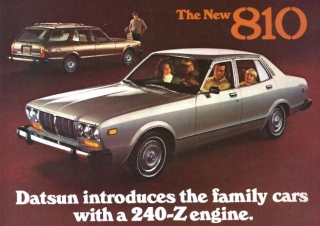 Making things more confusing for potential enthusiasts, the “first generation Maxima” was actually the second generation of the 810. To find out where the 4-Door Sports Car name of the Maxima came from we have to look at this car. The first generation Datsun 810, sold from 1977-1980, was designed to be a 6 cylinder mid-size car for the American market.
Making things more confusing for potential enthusiasts, the “first generation Maxima” was actually the second generation of the 810. To find out where the 4-Door Sports Car name of the Maxima came from we have to look at this car. The first generation Datsun 810, sold from 1977-1980, was designed to be a 6 cylinder mid-size car for the American market.
Instead of spending a load of money designing a fresh chassis from the ground up (or doing the logical thing and spending almost no money to simply give us the Laurel), Nissan found middle ground. They used their Japanese Nissan Bluebird (810) chassis and extended the front 99 millimeters to fit their 6 cylinder L24E engine, an old trick dating as far back as the Prince S54 Skyline 2000GT.
While the 810 was the precursor to one of Nissan’s great nameplates, it didn’t quite have the racing pedigree of the S54. That didn’t stop clever marketing executives from playing off the sports car underpinnings though. Ads featured tag lines like “Family cars with a 240Z engine” and “World’s most underpriced luxury/performance car.” There was also an esoteric coupe variant which is currently outnumbered by complete tyrannosaurus rex skeletons.
The 810 today is a very polarizing car. it is the ultimate 70s malaise wagon on the surface, but beneath the Griswold-style exterior lies the architecture of a sports car and better fit and finish than anything made in Detroit. Although not well known today, it’s sold well enough to warrant a second generation.
Luckily, the styling of the first-generation 810 was greatly improved upon with the arrival of the 1980s. The G910 body style kept the L24E engine under the hood, along with the RWD layout and the base model 810 Deluxe came equipped with a manual transmission. It even continued Nissan’s early adoption of the independent rear suspension (and given that it’s a Nissan product the S13 coilover design fits right in and can make for a fun project that parts are actually available for). The result was a car that didn’t look like a gangrenous war wound, handled itself just well enough to be confidence inspiring, and had the bragging rights from its Z-Car roots.

Of course being an 80s car, gimmicks were aplenty. While some, such as the keyless entry system found in the 1984 models, would go on to become a staple of the industry. Others, like the voice warning system, would not be appreciated until decades later. Since digital computers for the consumer were still in their infancy, it would be common to see an analog part being controlled by a computer. As sound compression was not perfected yet, the first generation of the Maxima used a tiny phonograph with various tracks associated to individual warnings.

Under the hood, the Bosch K-Jetronic mechanical fuel injection system found in a 280ZX was paired to a smaller 2.4-liter L-series straight-six to the tune of 120 horsepower. Although originality is cool, it’s not unheard of for people to swap to a happy set of sidedraft carbs. The engine itself is slightly changed from the original 240Z L24 in the name of efficiency, but changes are largely relegated to the rotating assembly with things such as slightly thinner rods.
There was also a diesel variant only available in America called an LD28, which is just different enough from the petrol L-Series engines to not be helpful. Luckily, the rods from the diesel do swap over to petrol engines for a factory stroker. Of course, if you wanted to just spend all of your money on Baller Points, an OS Giken DOHC setup would look pretty slick in the engine room.
Speaking of baller points, with the zokusha style becoming ever more popular here in the United States, a Maxima would be a great platform to build off of for that style. In fact, its Japanese market cousin was one of the actual race cars that inspired the whole kaido racer look. The lines of the simple three-box body with big, greenhouse-style windows fits the general styling trends found in cars like the other common platforms like Cedrics, Cressidas and Soarers.
The thing that held back the original 810 was the aesthetic. With that sorted, the Maxima was met with only good remarks. Road & Track called it “handsome in the Mercedes-Benz manner” which is no small compliment when most Japanese car reviews of the era had their compliments followed by a “for an Oriental car.” With handsome straight lines of the 80s, you have one of the best looking sedans from the Reagan administration.
The question still stands, though, why isn’t this car as popular as a Cressida? While it is a great car, a stand out of the model line as a whole, the Maxima unfortunately only had one generation of sending power to the right end. The Cressida, however, was kept RWD for several generations, and continued — under Mark II, Chaser and Cresta nameplates — well into the 21st century in Japan.
Also, while the Maxima and Cressida started on equal footing, the Cressida gained a bit of power once the 5M-GE was implemented. What it likely comes down to is that everyone remembers the significantly more numerous FWD Maximas, and that’s the first thing that pops into your head when someone utters the name. Say Cressida, on the other hand, and people think of RWD luxury sedan.
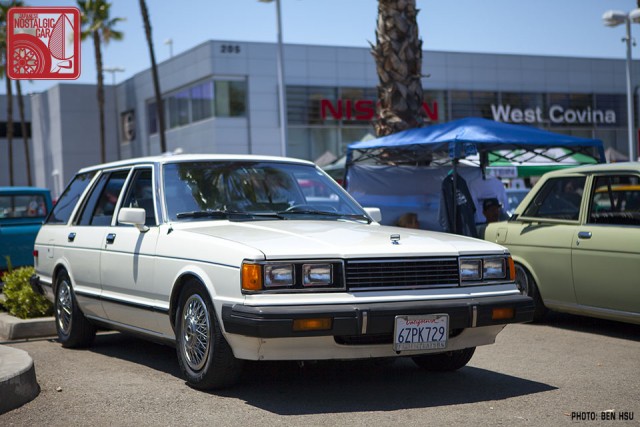
G910 Maximas are one of the best hidden treasures from the waning days of the Datsun Era. With an entry price for a concours example still struggling to break $5000, it’s an affordable treasure as well. At those prices, they’re one of the most affordable JNCs available stateside. The best part is it’s not some weird car nobody has ever heard of with no aftermarket support at all or some commonly stolen whip people know they can get parts off of.


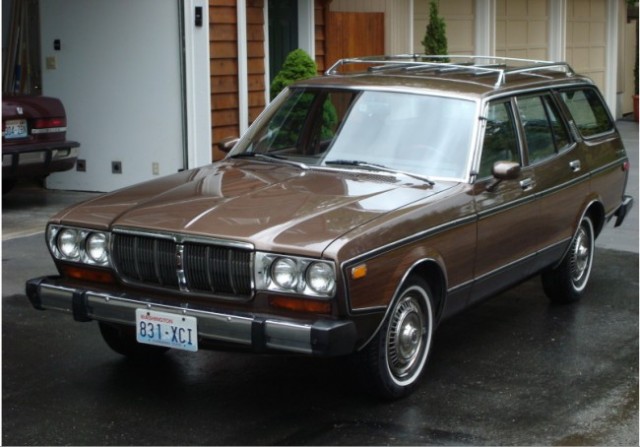


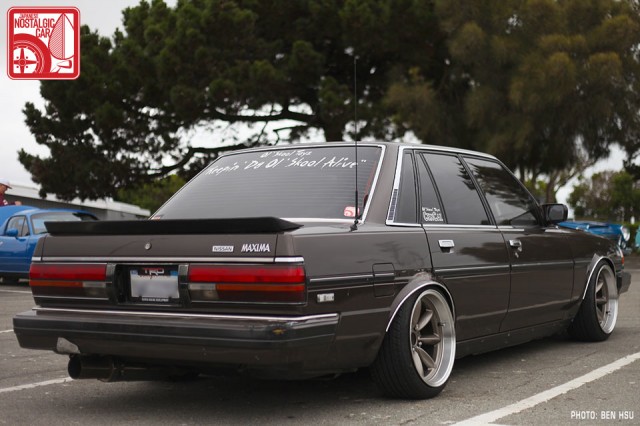
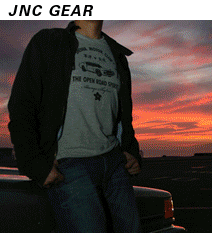
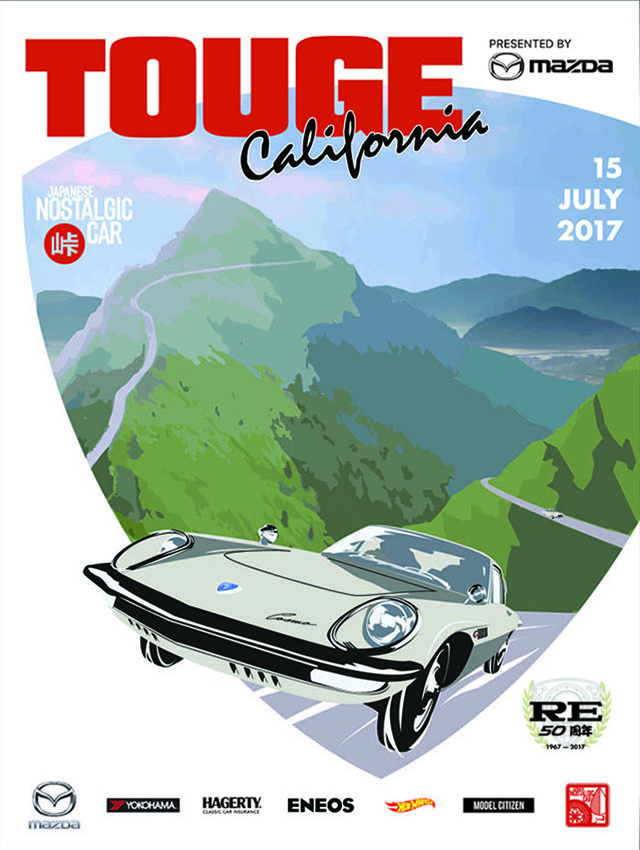
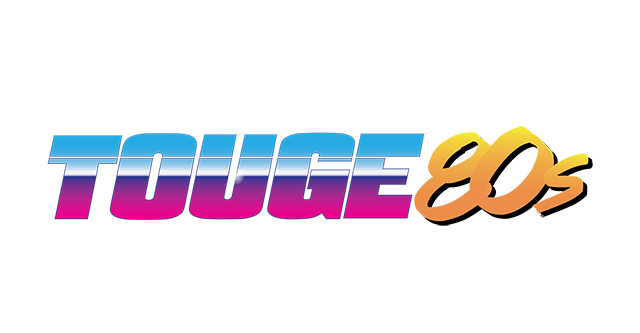

Why does that X7 Cressida have Maxima badging?
Good article! Always thought these cars dont get enough love
A guy at a show in the Bay Area added the badge as a joke. We put it in the story since we were comparing Cressidas. And for the lulz.
As a owner of both a 1979 Datsun 810 Wagon and 1984 Datsun Maxima Sedan both cars are far from equal even with the 810 having the L24E only and the 1st gen Maxima having both L24E and LD28 choices. The 810 styling to me was more pleasing as it was the last of the 70’s true design that did not follow onto the Maxima G910 squared body. The only bad thing I can say about the 810 are the big chrome bench bumpers which kill the styling a little as they can look so good without them, lowered on nice wheels. The Maxima looks so good lowered with wheels. I can see why they aren’t as popular in the states from the lack of available aftermarket parts for both 810 and Maxima as there once was back when they were at there prime. The 810 line up had 3 different 810s, Coupe, Sedan and Wagon, Maxima only had the Sedan and Wagon, but no Coupe. Still both are very fun cars to drive, unlike the cressida the 810 and Maxima offered Manual trans and Automatic. Both my 810 Wagon are 5 speed my Wagon was originally a 4 speed manual car which is rare now days. The only 810 to offer a 5 speed was when the 810 coupe came to the lineup in 1979-1980 and are almost uber rare to find now.
The most surprising thing is both 810 and Maxima have enough room for a RB swap which I have yet to see in a 810 but in the Maximas I’ve seen all RB swaps. Hope they become more popular we need aftermarket companies to get in on the growing popularity to make parts for both.
Some years later and no one still likes this forgotten car, except you and me. I think the 2.4 litre with the diesel rods is enough to survive the next 50 years or so, but even the older 810 Coupe doesn’t look good. Almost like a super-streched 1970s Skyline, to be realistic. The asians doing the last “colonnade” thing.
Wanna proof? This one was sold in BAT, 2023, for merely US$ 6000: https://bringatrailer.com/listing/1979-datsun-810/
No doubt the boxy middle generation is actually a good looking car with just a reliable FR layout. And I guess I can echo the same meaning from those magazines at the time. Good enough… for an Oriental car, anyway. Shakotan material only.
Better than a Stanza.
Does anybodys ever seen USA brochures of the original 810, trying to find one seems to be impossible, all the years from 1977 to 1980 and i’ve been searching many years. Even Datsun-Nissan reference don’t have one. Please if somebody have one, can it put the photo on your site?
If I come across one I’ll be sure to make a post. Finding stuff for this era of Datsun is harder than sourcing parts for a Dusenberg.
My car in another article thats so cool i love my wood wagon, a fun car forsure gotta love the round light front
Another nissan in the same boat:
90-92 Infiniti M30 (F31)
As an owner of both. I have to thank the plentiful interchangability to the Schassis when it coms to footwork, on the other hand, im thankful for the owners group surrounding both the 910 and F31. Specificly F31club.com and the facebook groups.
One of my favorite series… I think clean lines hold up well with time. They still look great today when they are maintained & lowered tastefully. I saw a wagon awhile ago with fake wood grain trim, slammed & plenty of patina, however, & it was awesome.
I’ll go along with the timing – the name change period – didn’t help sales. Maybe it would have sold better if the introduction were held until the name change was completed.
Maybe if they’d put in the full-on Z-car driveline – yes, including a stick – they could have REALLY marketed it as the 4-Door Sports Car. Could’ve run against BMW 3s, rather than Cressidas… “You want a sports car, but you need a family car. Introducing the new Maxima! The car you want, in the car you need! Maxima – Leading the way of the new Nissan!”
Should’ve kept the coupe, too, to appeal to the “Yuppies.”
I don’t think they sold well around here (Pittsburgh), as I ALWAYS noticed them. Not dirt-common, like a Camry or Malibu.
I don’t recall seeing any Maximas (or Cressidas, or much of any other J-cars) of more than 10 years old around here in a LONG time. (Come to think of it, not too many GM “J-cars” either.) We use a LOT of road salt…
Probably a lot were lost in the “Cash-for-Clunkers” scam, by people who just thought: “Old car,” as were many others that would be perfectly usable with some work. (No, I DON’T and WON’T forgive the feds for that one.)
Coulda, woulda, shoulda…
Greeting,from Puerto Rico, I own a nissan 1984 I’m looking for the hood panel[bonnet] and driver’s door,if anyone can help me I appreciate it.
cordially
juan C Lassalle
juancarlosylizy@hotmail.com